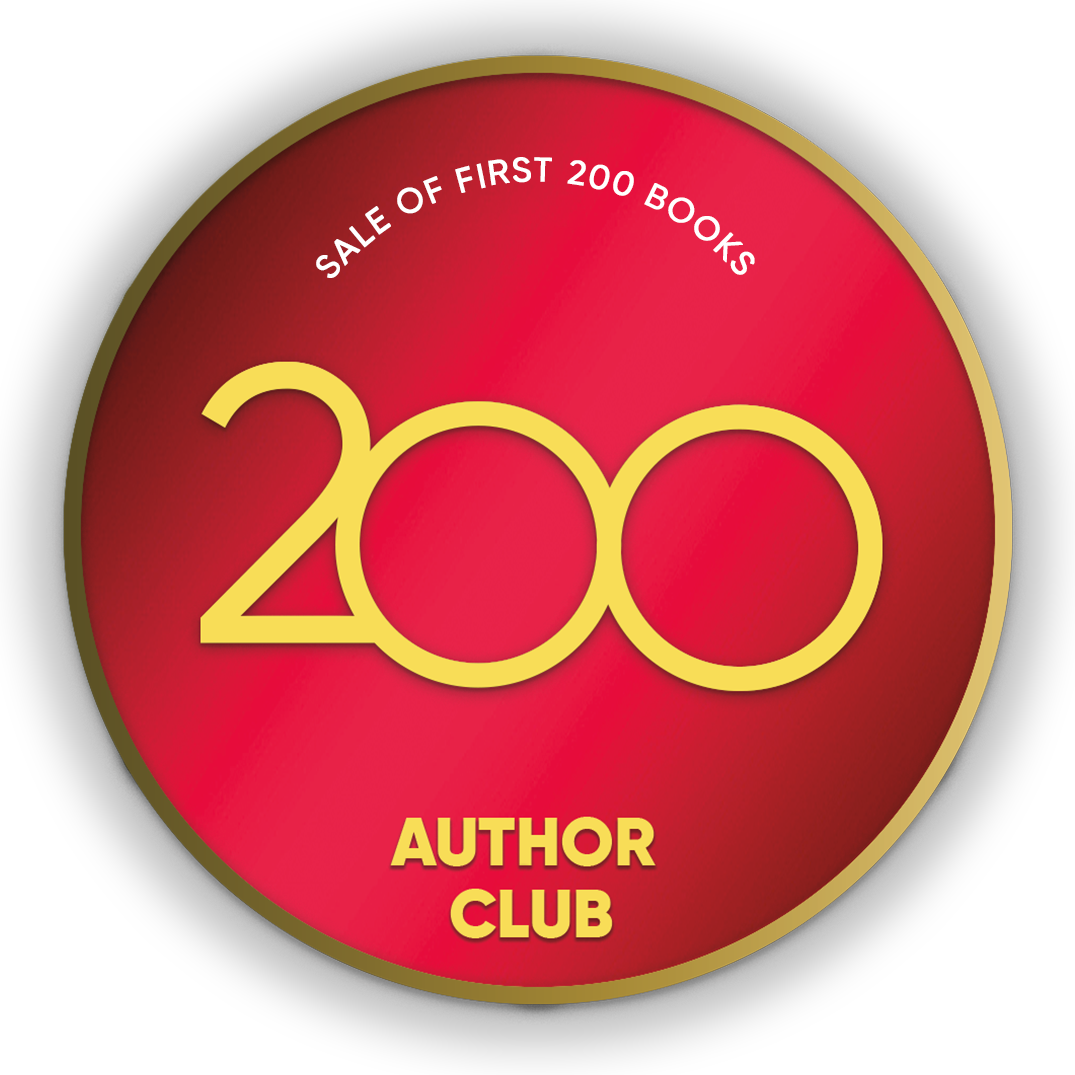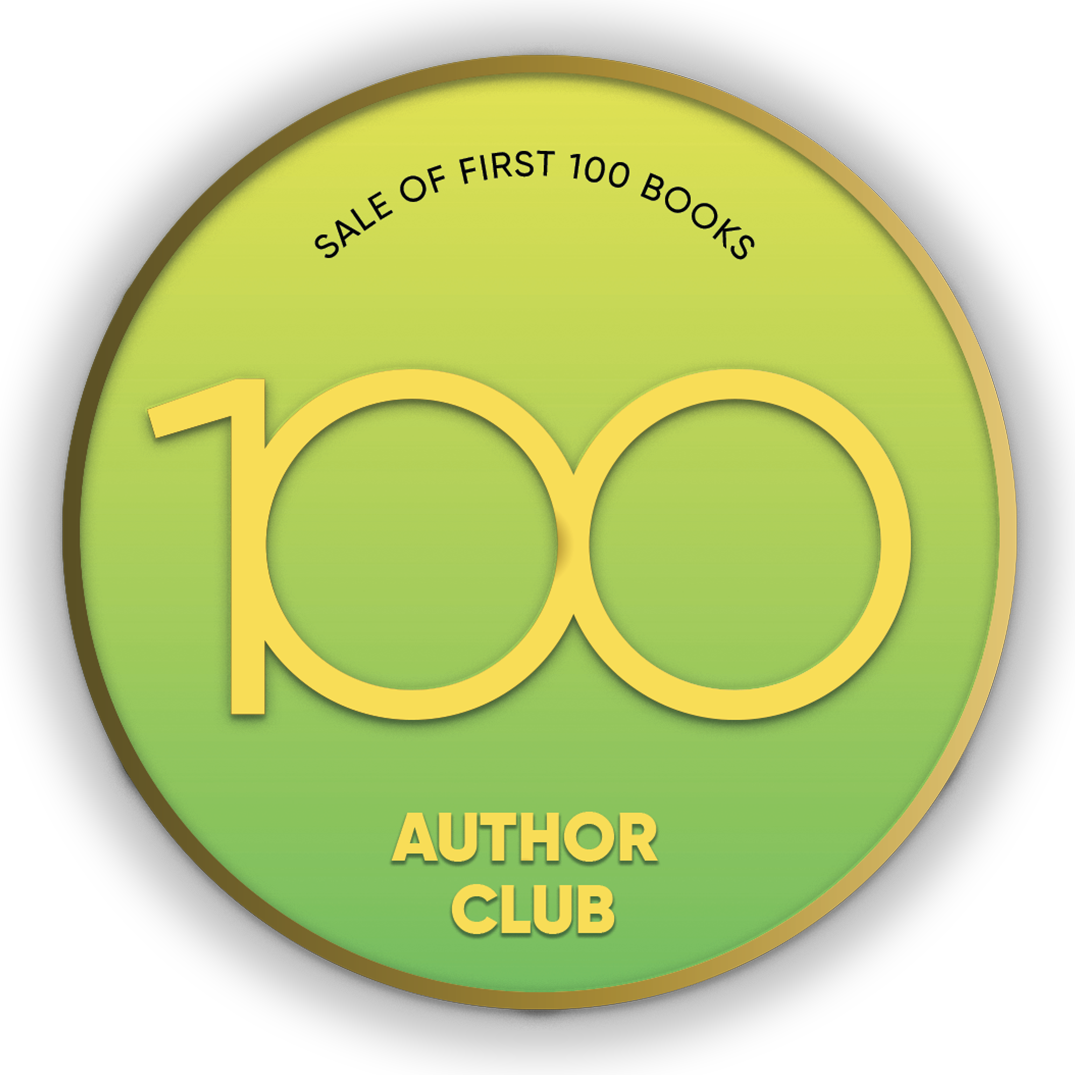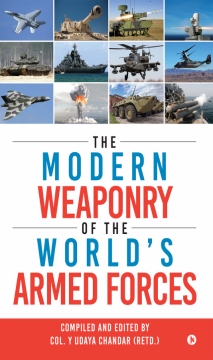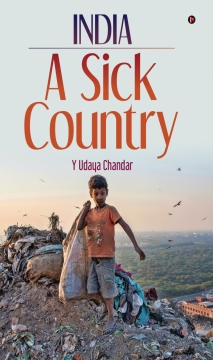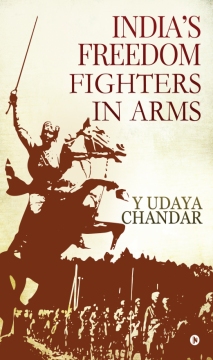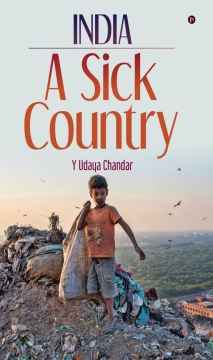
- Discover books
- For Writers
-
For Writers
-
Indie Author Championship
-
Challenges
Writing Contests
- Get Started

"It was a wonderful experience interacting with you and appreciate the way you have planned and executed the whole publication process within the agreed timelines.”
Subrat SaurabhAuthor of Kuch Woh Pal -
-
-
IN
- India
- Singapore
- Malaysia
- 0
Crop your profile image

The Modern Weaponry of the World’s Armed Forces
Books by Col. Y Udaya Chandar (Retd.)
The Modern Weaponry of the World’s Armed Forces is a treatise of military weaponry. It depicts about forty present-day weapon systems possessed by various nations, describing three to four weapons of each category with images, specifications, origin, development and design briefly. The weapon systems presented are almost all from the twenty-first century or the weapons presently under development.
Only a very few officers in the three services know the
The Modern Weaponry of the World’s Armed Forces is a treatise of military weaponry. It depicts about forty present-day weapon systems possessed by various nations, describing three to four weapons of each category with images, specifications, origin, development and design briefly. The weapon systems presented are almost all from the twenty-first century or the weapons presently under development.
Only a very few officers in the three services know the finer distinctions between, say, cruise missile and ballistic missile, fourth generation jet fighter and fifth generation jet fighter and howitzer and a field gun. All such nuances are explained clearly.
The beginning explains the ‘history of military weapons’ briefly and ends with information on the missile shield erected by most countries including India. The missile shield destroys the hostile incoming aircraft or missile automatically. The missile shield presented is real, exists on the ground today and not fictitious.
The militaries win the war with the help of the man who stands erect in the face of the enemy fire and the weapon that is in his hands. All the students of military science must read this invaluable book about the gun in the hands of a soldier, what exactly it is and how much it matters.
India: A Sick Country
Books by Y Udaya Chandar
Congratulations. By around 2025 India will be the most populous country in the world surpassing China.
But unfortunately, India is afflicted with some of the worst circumstances a country can face like a large number of farmers committing suicide, rampant poverty, unmatched corruption, a huge illiterate population, massive unemployment, thousands of un-electrified villages, lack of toilets and sanitation, millions of malnourished children and grave huma
Congratulations. By around 2025 India will be the most populous country in the world surpassing China.
But unfortunately, India is afflicted with some of the worst circumstances a country can face like a large number of farmers committing suicide, rampant poverty, unmatched corruption, a huge illiterate population, massive unemployment, thousands of un-electrified villages, lack of toilets and sanitation, millions of malnourished children and grave human trafficking of girls and women to outside countries and these prove that all is not well with the country.
Any number of data drawn from the utmost reliable sources put India in a bad light. India is the home for one-third of the world’s poorest population. More than 60 crore Indians defecate in the open as per the government’s own revelation. The book relies heavily on the data provided by UNO and the Indian government.
The country is hiding its face like an ostrich to two realities, namely, population explosion and corruption which have placed the country on the path of disaster. The policy makers are concerned with their own well-being and the elected representatives with their own five-year term. The country is drifting into an unknown realm of catastrophe.
After reading the book you have to decide whether the country is sick or healthy. If you find the country sick please suggest how to redeem the country. It is your turn now to speak.
Can you do anything for India? Read on……
The Strange Compatriots for Over a Thousand Years
Books by Y Udaya Chandar
Hinduism is an Indian Dharma or a way of life widely practiced in South Asia. It is the oldest religion in the world.
Islam is an Abrahamic monotheistic religion that teaches us that there is only one God (Allah) and that Muhammad is His messenger. The origin of Islam is in Allah’s divine revelations to Muhammad through the Angel Gabriel.
Islamic influence spread into India by Arab spice traders, missionaries and Muslim invaders
Hinduism is an Indian Dharma or a way of life widely practiced in South Asia. It is the oldest religion in the world.
Islam is an Abrahamic monotheistic religion that teaches us that there is only one God (Allah) and that Muhammad is His messenger. The origin of Islam is in Allah’s divine revelations to Muhammad through the Angel Gabriel.
Islamic influence spread into India by Arab spice traders, missionaries and Muslim invaders. Hindus experienced very severe religious persecution at the hands of the brutal and barbarous Muslim invaders in the form of forceful conversions, massacres, demolition and desecration of temples, as well as the destruction of universities and schools.
In the early 1940s, the British government decided to grant independence to India after a mammoth struggle by the Indians for decades. Most leaders favoured a united India but Jinnah, the Supremo of the Muslim League, alone preferred the division of the country and carved out Pakistan for the Muslims. The Muslims of India, Jinnah insisted, are ‘a distinctive culture and civilization’. A few historians compared the Partition of the country to the holocaust and called it genocide.
Hindus and Muslims have lived together in India for over a thousand years. But the give and take between the two communities is minimal. The Hindu-Muslim relations in India cannot be said to be close and cordial. Though there is no perceptible antagonism between the communities, something appears to be missing; the harmony desired among the compatriots is wanting. Each community keeps to itself and there is no love lost between them.
The book describes the Hindu-Muslim relations over centuries.
India’s Freedom Fighters in Arms
Books by Y Udaya Chandar
Many authors have written biographies of leading freedom fighters like the great Bhagat Singh, Mahatma Gandhi and others. India’s Freedom Fighters in Armsis a compilation of life stories of many such known and unknown freedom fighters who dared to raise arms against the mighty British government and its army and sacrificed their lives. This book will take you to the time when Rani Lakshmibai (Jhansi Ki Rani) sacrificed her life on the battlefront, f
Many authors have written biographies of leading freedom fighters like the great Bhagat Singh, Mahatma Gandhi and others. India’s Freedom Fighters in Armsis a compilation of life stories of many such known and unknown freedom fighters who dared to raise arms against the mighty British government and its army and sacrificed their lives. This book will take you to the time when Rani Lakshmibai (Jhansi Ki Rani) sacrificed her life on the battlefront, fighting the shrewd enemy while riding a horse and wielding a sword.
When Netaji Subhas Chandra Bose alone dared to oppose Mahatma Gandhi’s views and had sacrificed his everything for India.
When Tatya Tope fought against the British army as a guerrilla warrior.
When Alluri Sita Rama Raju and Kattabomman, who are worshipped in Andhra Pradesh and Tamil Nadu respectively contributed significantly to the Indian freedom fight before being killed ruthlessly by the British.
Learn in detail about the Gadar Party and many lesser-known Sikh and Maratha warriors.
Independent India’s All the Seven Wars
Books by Col Y Udaya Chandar (Retd)
India fought seven wars in its independent era. The book is a factual story of all these wars which include ‘The Liberation of Goa’ and the ‘Siachen War’. The book is a condensed military history but at the same time an exhaustive one. For a student of military history it will be a precious possession.
The book brings out many ‘not so well known facts’ such as ‘Hyderabad Police Action’, ‘how J&K acceded into India’, ‘Radcliffe A
India fought seven wars in its independent era. The book is a factual story of all these wars which include ‘The Liberation of Goa’ and the ‘Siachen War’. The book is a condensed military history but at the same time an exhaustive one. For a student of military history it will be a precious possession.
The book brings out many ‘not so well known facts’ such as ‘Hyderabad Police Action’, ‘how J&K acceded into India’, ‘Radcliffe Award bifurcating the Indian sub-continent’, ‘Jinnah’s Two-Nation theory’ and ‘division of British India Armed Forces between India and Pakistan’.
The book narrates in detail how the Chinese war came about to disgrace the country and its majestic army.
The book gives a short history of the then East Pakistan in its existence for about twenty years and how East and West Pakistan moved away from each other never to make a come-back.
The book describes how the armies fight at God-forsaken heights of 20,000 feet in winters.
If one reads this book he/she need not study the other voluminous versions of the Indian wars.
The Modern Weaponry of the World’s Armed Forces
Books by Col. Y Udaya Chandar (Retd.)
The Modern Weaponry of the World’s Armed Forces is a treatise of military weaponry. It depicts about forty present-day weapon systems possessed by various nations, describing three to four weapons of each category with images, specifications, origin, development and design briefly. The weapon systems presented are almost all from the twenty-first century or the weapons presently under development.
Only a very few officers in the three services know the
The Modern Weaponry of the World’s Armed Forces is a treatise of military weaponry. It depicts about forty present-day weapon systems possessed by various nations, describing three to four weapons of each category with images, specifications, origin, development and design briefly. The weapon systems presented are almost all from the twenty-first century or the weapons presently under development.
Only a very few officers in the three services know the finer distinctions between, say, cruise missile and ballistic missile, fourth generation jet fighter and fifth generation jet fighter and howitzer and a field gun. All such nuances are explained clearly.
The beginning explains the ‘history of military weapons’ briefly and ends with information on the missile shield erected by most countries including India. The missile shield destroys the hostile incoming aircraft or missile automatically. The missile shield presented is real, exists on the ground today and not fictitious.
The militaries win the war with the help of the man who stands erect in the face of the enemy fire and the weapon that is in his hands. All the students of military science must read this invaluable book about the gun in the hands of a soldier, what exactly it is and how much it matters.
India: A Sick Country
Books by Y Udaya Chandar
Congratulations. By around 2025 India will be the most populous country in the world surpassing China.
But unfortunately, India is afflicted with some of the worst circumstances a country can face like a large number of farmers committing suicide, rampant poverty, unmatched corruption, a huge illiterate population, massive unemployment, thousands of un-electrified villages, lack of toilets and sanitation, millions of malnourished children and grave human
Congratulations. By around 2025 India will be the most populous country in the world surpassing China.
But unfortunately, India is afflicted with some of the worst circumstances a country can face like a large number of farmers committing suicide, rampant poverty, unmatched corruption, a huge illiterate population, massive unemployment, thousands of un-electrified villages, lack of toilets and sanitation, millions of malnourished children and grave human trafficking of girls and women to outside countries and these prove that all is not well with the country.
Any number of data drawn from the utmost reliable sources put India in a bad light. India is the home for one-third of the world’s poorest population. More than 60 crore Indians defecate in the open as per the government’s own revelation. The book relies heavily on the data provided by UNO and the Indian government.
The country is hiding its face like an ostrich to two realities, namely, population explosion and corruption which have placed the country on the path of disaster. The policy makers are concerned with their own well-being and the elected representatives with their own five-year term. The country is drifting into an unknown realm of catastrophe.
After reading the book you have to decide whether the country is sick or healthy. If you find the country sick please suggest how to redeem the country. It is your turn now to speak.
Can you do anything for India? Read on……

Are you sure you want to close this?
You might lose all unsaved changes.
Select from one of our global stores to continue
 India
India
 Singapore
Singapore
 Malaysia
Malaysia
Warning Message
The items in your Cart will be deleted, click ok to proceed.






